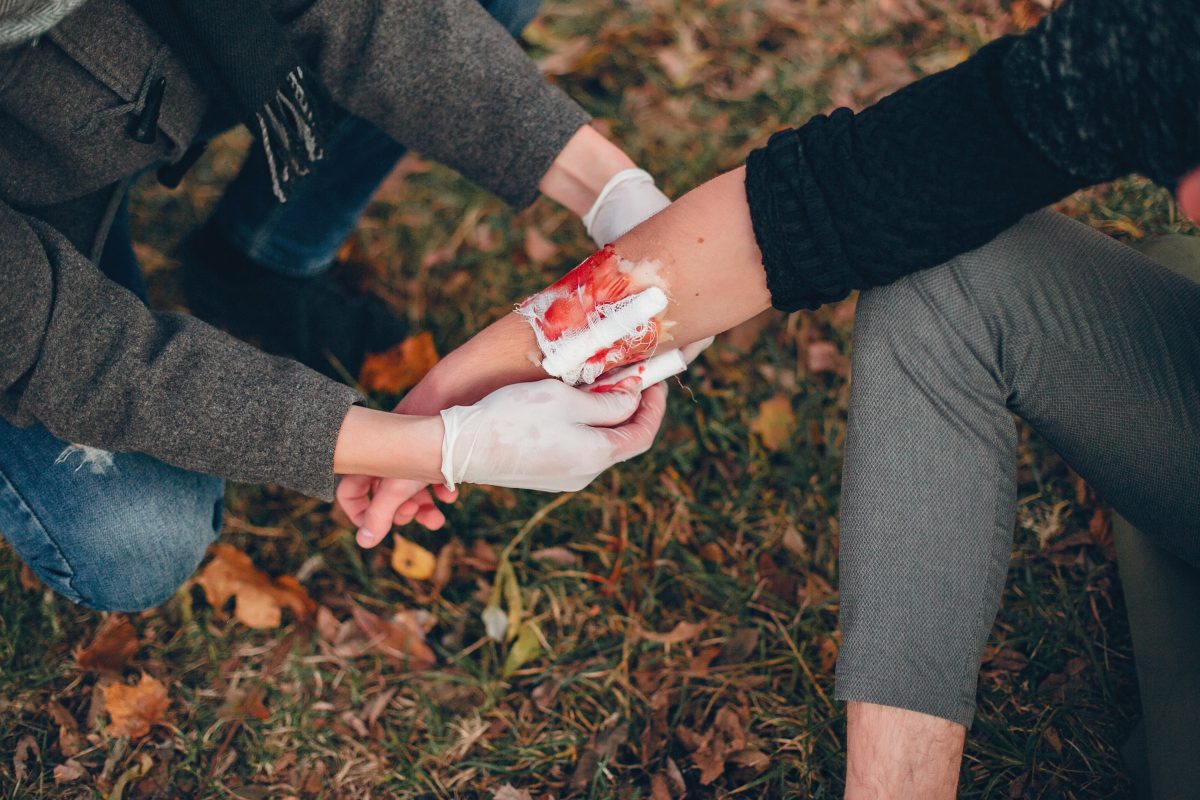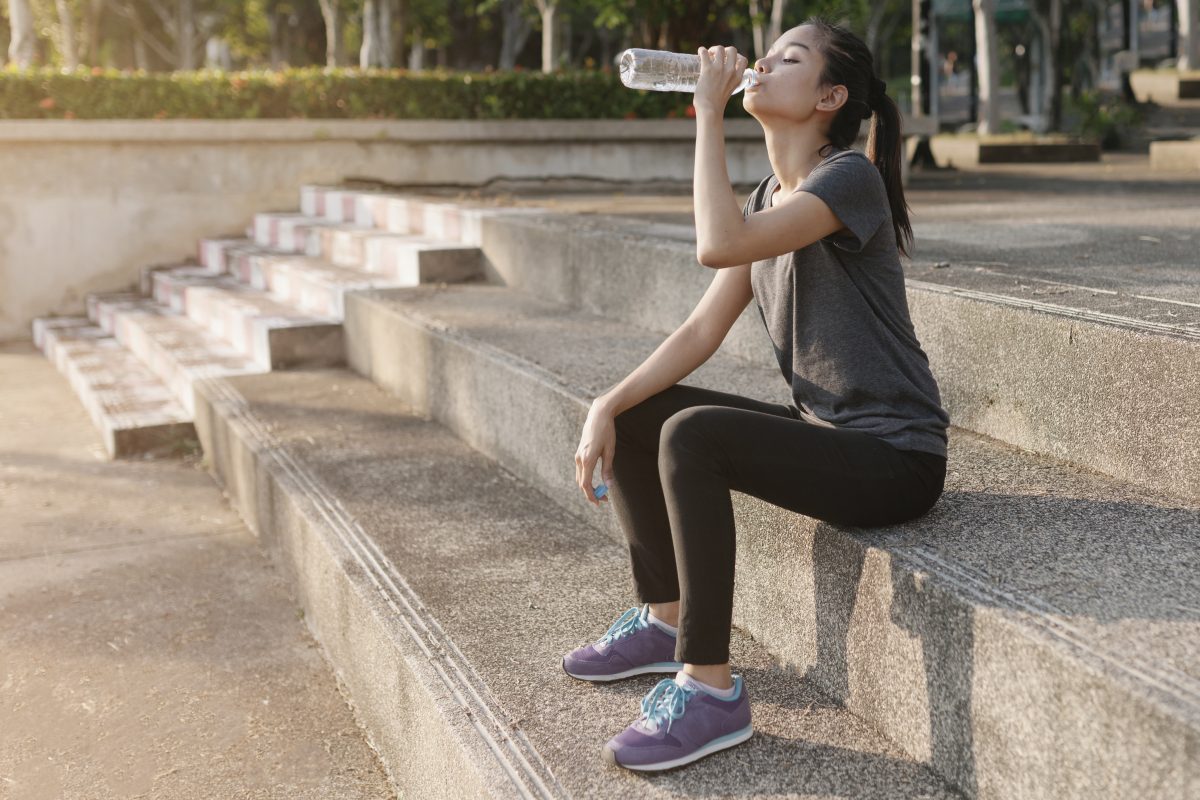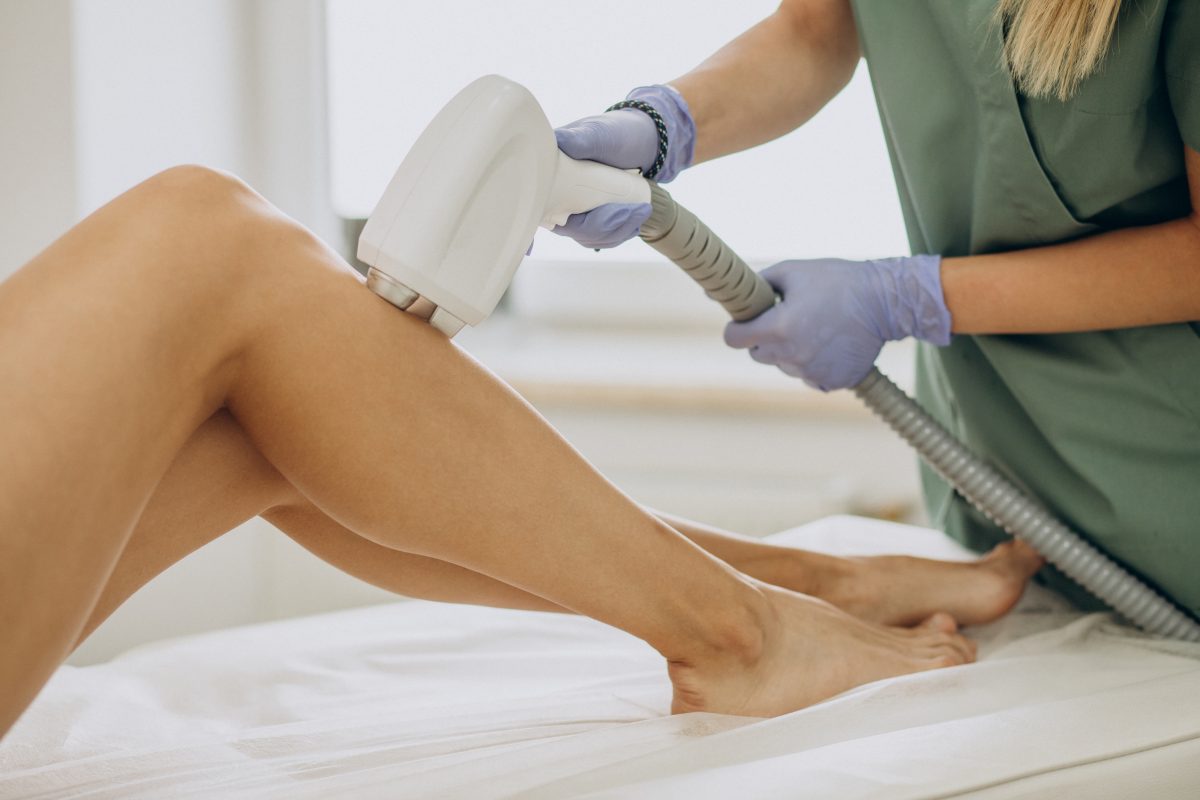You came home after a long day at work and sat down to relax. Suddenly, you notice blood running down your leg from the varicose veins. This is varicose vein bleeding.
Though varicose veins appear just beneath the skin, causing some discomfort, they usually don’t pose serious risks.
But in some cases, shaving your legs, accidental injuries or simply taking a hot shower can cause varicose vein bleeding. This occurs when the vein becomes too damaged or the skin over it gets too thin, leading to a rupture and unexpected heavy bleeding.
We understand that this situation might cause panic, especially if it’s happening for the first time. This article will educate you about varicose vein bleeding, the causes, symptoms and treatment that can prevent further complications, as well as when to visit the vein treatment center.
What are bleeding varicose veins?
Bleeding varicose veins are varicose veins that appear swollen and twisted but they have become damaged to the point where they start to bleed.
Under normal conditions for the most part, these varicose veins remain under the skin. While they seem uncomfortable, they are usually harmless unless they burst or get damaged due to piercing.
So, when the skin over these veins becomes too thin or gets injured, it can cause the vein to burst and bleed.
This is why it is recommended that you be extra careful when shaving your legs to prevent them from getting hurt. Even a small cut can lead to excessive bleeding because larger varicose veins with thin overlying skin or surface skin are fragile and weak.
What are the signs and symptoms of bleeding varicose veins?
Your varicose veins bleed, especially in the lower parts of your legs, such as the ankles and feet, as these areas undergo excess pressure.
Bleeding varicose veins are not always evident. For instance, if it bleeds externally, you can notice it. But internal bleeding isn’t very obvious.
However, some symptoms indicate bleeding varicose veins. They are:
- If your varicose veins start to bleed internally, the affected area starts with discoloration under the skin. This makes it look like the bruise is getting larger.
- Blood-soaked clothing or bedding, either during sleep or slowly, soaks into your clothes without you realizing it.
- Swelling in the concerned area due to the accumulation of blood.
- The affected area might be painful, tender to the touch, or feel achy, especially when you stand or walk.
- Heaviness or fatigue in the legs might worsen after bleeding occurs and make the legs feel more heavy.
If you are in need of varicose vein testing in Thousand Oaks, visit the Center for Vein Wellness. We can assess your condition and advise on the best course of treatment.
What are the factors that increase the risk of bleeding veins in the legs?
There are multiple factors that can cause or increase the risk of varicose vein bleeding. Some of the main ones are listed below:
Aging: With age, your varicose veins lose their elasticity and strength. So they become more vulnerable to damage and bleeding.
Obesity: If you are obese, your body weight can add extra pressure to your leg veins and increase the risk of vein damage.
Prolonged standing or sitting: If you stand or sit in one position for long periods, it can increase pressure in the leg veins and cause vein weakness and bursting.
Genetics: A family history of varicose veins or vein-related issues increases the likelihood of developing similar problems.
Pregnancy and other hormonal changes: The increased blood volume and pressure during pregnancy can weaken veins and make them bleed.
How can hot showers cause varicose vein bleeding?
People who take hot showers are at risk of spontaneous bleeding. Because when you stand for a long time while bathing at a high temperature, these things combined make the leg veins dilate. This increases the risk of vein bleeding.
What happens if burst varicose veins aren’t addressed well?
A burst varicose vein can cause many complications, such as:
The legs might suffer from infection, causing open wounds or ulcers that might get infected and lead to more serious health issues.
The burst varicose veins mainly cause excessive bleeding that could stop only with medical intervention.
There’s a chance that blood clots could form, which could cause more trouble if they move to other parts of your body.
Ulceration near the bleeding site makes it easier for ulcers to form.
If you are looking for an effective varicose vein treatment, our specialized doctors from the Center for Vein Wellness provide the latest procedures to ensure optimal results.
How do I stop bleeding varicose veins immediately?
If you have external bleeding, take quick action to stop the bleeding because varicose veins can bleed a lot.
- Remove the clothing near the cut. If the clothing is hard to remove, consider cutting it to avoid making things worse. Because you would be bleeding profusely, take this action.
- Use a medical bandage or gauze. In emergency situations, if you don’t have any, grab some thick, clean cloth strips, wrap them around the bleeding varicose veins and apply pressure.
- Avoid using any ointment on the affected cut and make sure the bandage isn’t too tight.
- Try elevating the leg above heart level, as this posture helps reduce blood flow to the bleeding area.
- You can press a clean cloth directly on the bleeding spot. Be firm but gentle; doing so will help stop or slow down the vein bleeding.
Whether you have controlled the bleeding or not, it’s always a good idea to call an ambulance or 911 right away and get medical attention soon.
How do you handle varicose vein internal bleeding?
Handling internal bleeding can be tricky. Because, for the most part, you can’t diagnose the source of the bleeding like you can with external cuts or injuries.
You might also experience intradermal bleeding. This is a type of internal vein bleeding that mostly affects spider veins. Here, when the spider vein ruptures within the skin surface, it turns into a blue-purple bruise that’s clearly visible to the naked eye.
Though bleeding at this stage is mild and limited, it’s best to seek medical attention to get the veins checked.
So, if you feel you are suffering from any internal varicose vein bleeding, try to stay as calm and still as possible and get medical attention right away.
Treatment for bleeding varicose veins
A varicose vein treatment doctor can assess your bleeding condition and recommend the most suitable treatment plan to improve your vascular health. We have listed the most common varicose vein treatment options. Each of these treatments targets the problematic vein; remove it to cut the chances of bleeding varicose veins.
Endovenous thermal ablation
This is a minimally invasive treatment that helps treat varicose veins and close them permanently.
Here, a small catheter is inserted into the vein and either laser or radiofrequency energy is applied. This forces the vein to collapse and seal shut. Blood flow is then diverted to healthier veins.
This treatment is effective and involves minimal downtime.
Ambulatory phlebectomy
This is a surgical procedure where the varicose vein is removed via small incisions in the skin. It’s usually performed under local anesthesia. Since the incisions are tiny, scarring is minimal.
This method is recommended for the varicose veins that appear close to the surface, as they are prone to bleeding.
Sclerotherapy
A special solution is injected directly into the varicose vein, where the solution irritates the vein lining and collapses it. This procedure is suggested to treat smaller varicose veins and has little to no downtime.
Non-thermal vein ablation
This includes varicose vein treatments such as VenaSeal (a medical adhesive) or Clarivein, which is a combination of a rotating catheter and a sclerosing agent.
These methods don’t use heat but instead rely on other mechanisms to close off the vein.
How to prevent bleeding varicose veins?
While you can’t prevent developing or bleeding varicose veins, at least you can control them to some extent.
Some bleeding varicose vein prevention tips are:
- Maintain a healthy weight, as obesity can put extra pressure on your veins.
- Regularly exercise. This helps improve blood circulation and reduces the risk of varicose veins becoming worse.
- Consider wearing compression stockings, which are specially designed socks or stockings that apply pressure to your legs. Thus, this helps improve blood flow and reduce swelling.
- Whenever you can, elevate your legs to help blood flow. This helps if you stand or sit for long periods of time.
- Keep your skin moisturized and treat any cuts or injuries to your legs promptly. Because naturally, the varicose vein skin is thin and prone to tearing and opening up.
Conclusion
We hope that you are aware of the causes and symptoms of varicose vein bleeding.
Varicose veins, though often harmless and seen as a cosmetic problem, can become a more serious issue when they start to bleed.
So, when you experience bleeding from varicose veins, you can stay a bit calm, try to stop or reduce the bleeding and seek medical attention immediately.
Whether you are dealing with varicose veins or supporting someone who is, understanding this can be of great use. If you are looking for a vein treatment center that offers advanced solutions for individuals seeking relief from bleeding varicose veins, visit the center for vein wellness located in Los Angeles, Oxnard, Palmdale, Westlake Village, Thousand Oaks and Beverly Hills.




